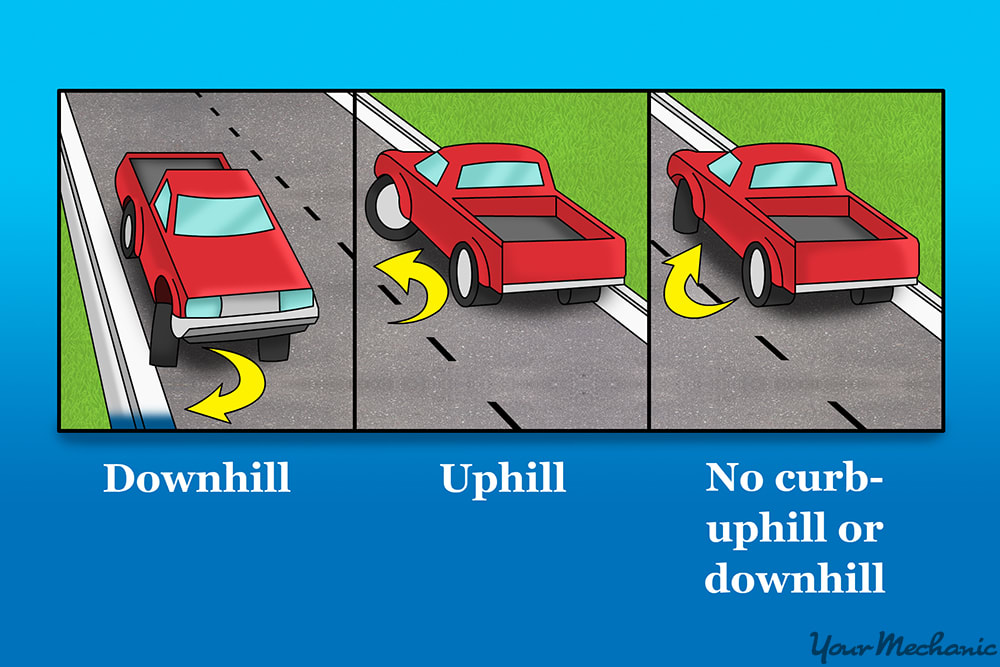Parking is one aspect of driving that people have difficulties with. Not only do you need to leave your vehicle in a safe space where it will not interfere with the flow of traffic, but you also need to be able to judge space and consider the position of other parked cars. These difficulties are only amplified when you need to park on a hill. In this article, our car experts take you through why parking on a hill is so difficult and the 7 essential steps to parking on a hill safely and effectively.
Why is Parking So Hard?
One of the main reasons that parking is so difficult is because it involves judging space while maneuvering your vehicle. Not only are you considering whether your vehicle will fit in the space available, but you also need to consider the space around you as you maneuver into the parking space. The turning space you have available and your angle of approach all depends on where you are parking. If it is in a car park, then you may have more freedom of movement, but a greater number of obstacles. If you are parallel parking on the street, then there are fewer obstacles, but you need to consider traffic flow.

As well as fitting into space, you need to consider whether the cars on either side of you can be accessed by their drivers and passengers. Do they have access to the trunk? Is there enough room for them to maneuver out of the space? Is there any signage on the vehicle suggesting that the driver needs more room than normal to enter or exit the vehicle or space?
All this, and more need to be taken into consideration when parking on a hill.
Why is Parking on a Hill Harder?
There are also additional safety concerns when it comes to parking on a hill. If you are parked on the flat and your parking brake fails, you might experience a slight roll of your vehicle, you may even tap the vehicle in front of you. However, if your parking brake fails on a hill, the consequences could be much more severe. Your vehicle could roll heavily into another vehicle causing damage; it could roll into a pedestrian, causing injury; if there is nothing to stop it, your vehicle could roll into oncoming traffic, causes a great deal of injury and damage.
7 Essential Steps to Parking on a Hill
Luckily, it is possible to reduce the risk of this occurring. The best way to do this is by following the 7 essential steps to parking on a hill.
Step 1
Step 2
Once you are in position check that you have left enough space on either side for the other vehicles to leave their spaces. Now, if you have a manual transmission, shift into first gear. If you have an automatic transmission, then shift to park. Leaving your vehicle in neutral or drive increases the risk of it rolling.
Step 3
Step 4
Before you turn off your engine, make sure you turn your tires. This helps control the direction of your car’s roll in the event that your parking brake fails. If you are parked facing downhill, then your front wheels should be angled towards the curb. If you are parked facing uphill, then angle the front wheels away from the curb. In the event that the brake fails the car will roll into the curb, rather than into oncoming traffic. As well as reducing the risk of a serious incident, the curb should help to slow the movement of the vehicle, reducing the risk of damage to your car or other surrounding vehicles.
Step 5
Now that you are safely parked, and your vehicle is less likely to roll into traffic it is time to exit the vehicle. You need to apply additional caution here as well. Remember that gravity will be affecting vehicles that are passing you in much the same way as it affected you while parking. It is also much more difficult to see and judge the actions of a parked car on a hill than it is on the flat.
Step 6
Step 7
As with any other maneuver, check your mirrors, look for oncoming traffic and drive slowly out of your space. Remember that the gravitational forces that applied while parking, still applies while leaving the space.
Is Parking on a Hill Bad for your Car?
There is little agreement as to whether parking on an incline damages your vehicle over time. Most experts believe that no damage is done when cars are occasionally parked on an incline. However, some experts believe that over time, continual hill parking can damage some vehicle parts.
Parking on a hill does put additional strain on the parking brake, meaning that wear will be accelerated. While little can be done to reduce this wear and tear, turning the wheels in the manner suggested above does help to safeguard your vehicle and other road users in the event that your parking brake fails.
Originally posted 2023-12-04 05:53:13.